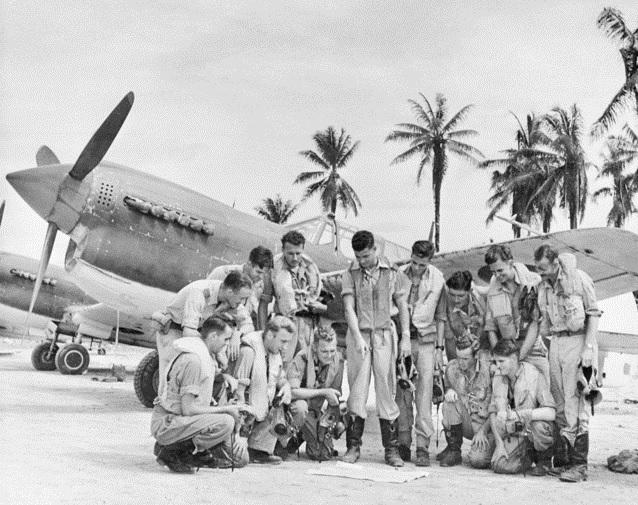
The recent announcements about Australian and US investment in a base at Lombrum on Manus Island in Papua New Guinea has elicited positive, yet guarded, support. Putting aside the real value to PNG of being able to deploy patrol boats there to police its territorial waters, the acceptance of the strategic value to Australia and the opportunity costs of building a major facility suited to military operations in a conflict in the Asia–Pacific seem largely unexamined.
Some strong claims have been made about the strategic value of Lombrum that draw on the experience of World War II. It’s claimed that ‘Manus is a fine strategic location that dominates this part of the Pacific’ and ‘is in a key position for controlling access to Australia through the archipelagic arc to our north and northeast’. It could be an ‘advanced base for the defence of New Guinea and Australia’. Its strategic role might be to present China ‘with a more complicated operating environment that it must take into account to protect its own forces’.
A more modest and realistic position was put by Sam Bateman, who observed that the ‘most vital role of the joint base will be to provide fuel for ships transiting through the area or operating out of the base’. The real strategic value of the base on Lombrum is ‘its forward position’ from which it will be possible ‘to monitor and control air and sea activities’ in the approaches to Australia and the Southwest Pacific.
Sensibly Bateman, with a sailor’s respect for maps and geography, cautions against ‘overambitious assessments linking the island’s strategic value to the situation in the South China Sea, or even to policing the Sulu and Celebes seas’. He judges that ‘Lombrum is too far from these areas to have any worthwhile effect’.
There are two outstanding issues that require clarification. Is there a strategic justification for the investment? The experience of a Pacific War fought over seven decades ago with very different military equipment against a different opponent and for different objectives doesn’t recommend itself as a useful guide for current policies. Also, is the role envisioned for Lombrum by the government a high priority?
In the strategic basis documents written between 1946 and 1976, Manus is mentioned 10 times, all of which are in 1946 and 1947, and the Admiralty Islands are mentioned twice, in 1953 and 1956. The references are primarily in the context of an invasion of Southeast Asia and Indonesia by communist forces, and a possible invasion of Australia. Those documents were drafted in the early days of the Cold War.
Whatever strategic importance Manus Island held during and just following World War II, it had greatly diminished by the outbreak of the Vietnam War. Manus has not featured in any Australian defence white paper since 1976. It would seem that something substantial must have just taken place in the strategic environment to cause its sudden elevation. That’s not evident, though.
The US Department of Defence’s 2018 annual report to Congress on China’s military and security developments shows no step function in Chinese military development. The PLA continues a ‘comprehensive restructure’ in order to become ‘a force capable of conducting complex joint operations’—and in particular to fight ‘short-duration, high-intensity regional conflicts at greater distances from the Chinese mainland’. This is no surprise.
Analysing China’s military strategy, the Pentagon reported that ‘China expects significant elements of a modern conflict to occur at sea’. However, the Pacific region was not believed to be an area of ‘strategic importance’ in China’s military planning. While China’s behaviour is depicted as often being coercive, there’s no suggestion in the report of China harbouring aggressive intent.
Undoubtedly China is already a great power in economic and military terms and is still growing and modernising its military. But the indications are that it aspires to military capabilities appropriate to its status and interests, and to be able fight and win in areas proximate to its coastline if necessary.
The costs of transforming Lombrum into a strategic asset has apparently not been quantified—understandably, given the complexity. As Bateman pointed out, there would be significant costs in re-establishing the base to cater for modern warships, including refuelling infrastructure, new wharves, and accommodation for Australian personnel.
If, as Peter Jennings has noted, it was planned to make Lombrum a forward operating base in a major regional conflict, the airfield would have to be upgraded to enable it to take fighters for force protection and surveillance aircraft. The RAAF would then need revetments and significant additional infrastructure to support operations and personnel.
Before the worth of that investment can be known, there must be some concept of the war in which it would come into play. Let’s say, for the sake of argument, that it’s a conflict in the South China Sea or the East Asian littoral. Vessels from Manus would need to traverse the narrow choke points surrounding the Sulu Sea or circumvent the Philippines. An adversary like China, if it believed Lombrum posed a threat, would be capable of interdicting vessels by submarine or attacking the base with air- or submarine-launched cruise missiles outside the joint strike fighter’s combat range.
In the war that the alarmists see coming against China, re-establishing the base at Lombrum would appear to be a very low priority. Distant from the theatre of operations and susceptible to being nullified or destroyed, it seems a waste of money to go far beyond the already planned $5 million upgrade to support PNG’s Guardian-class patrol boats.